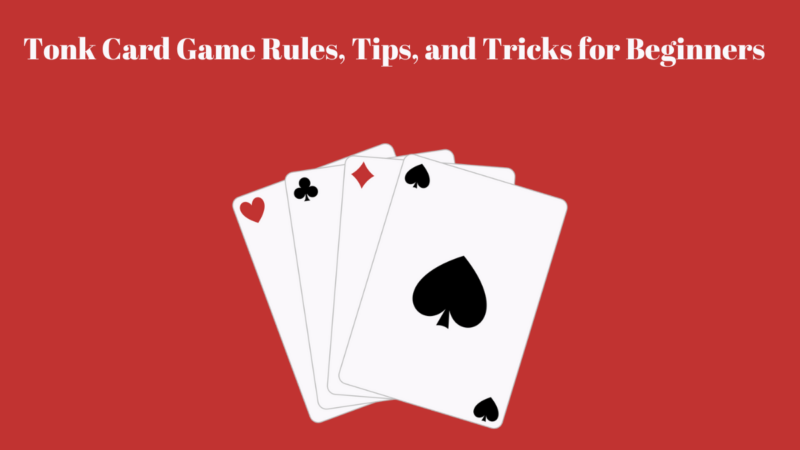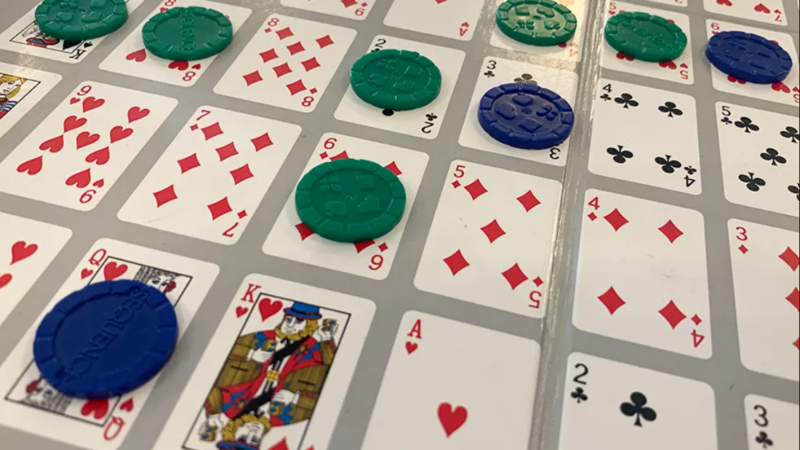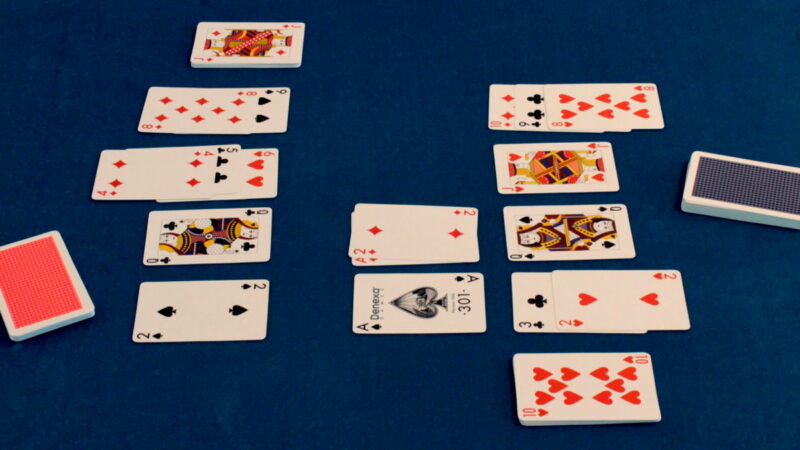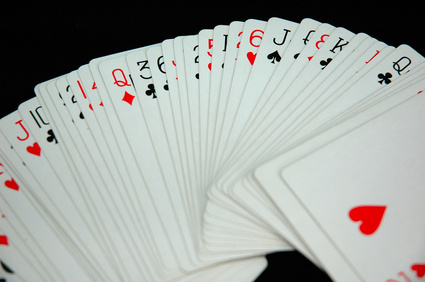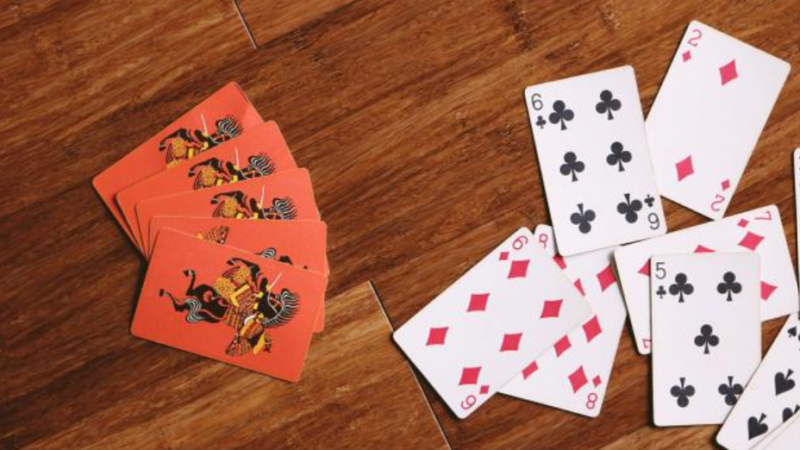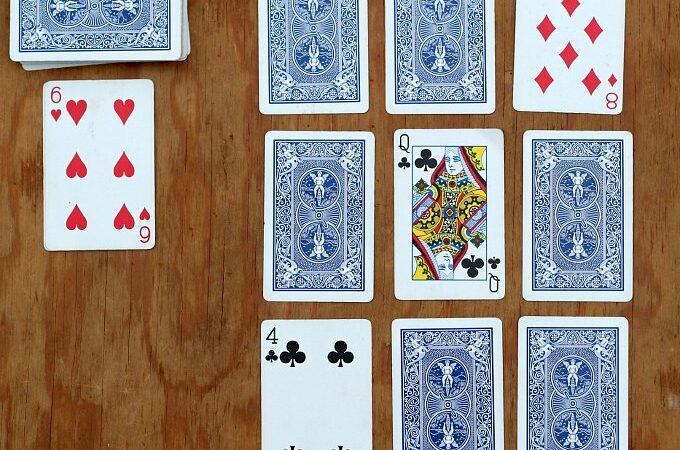How to Play 13 Different Card Games?games like Euchre or Pinochle
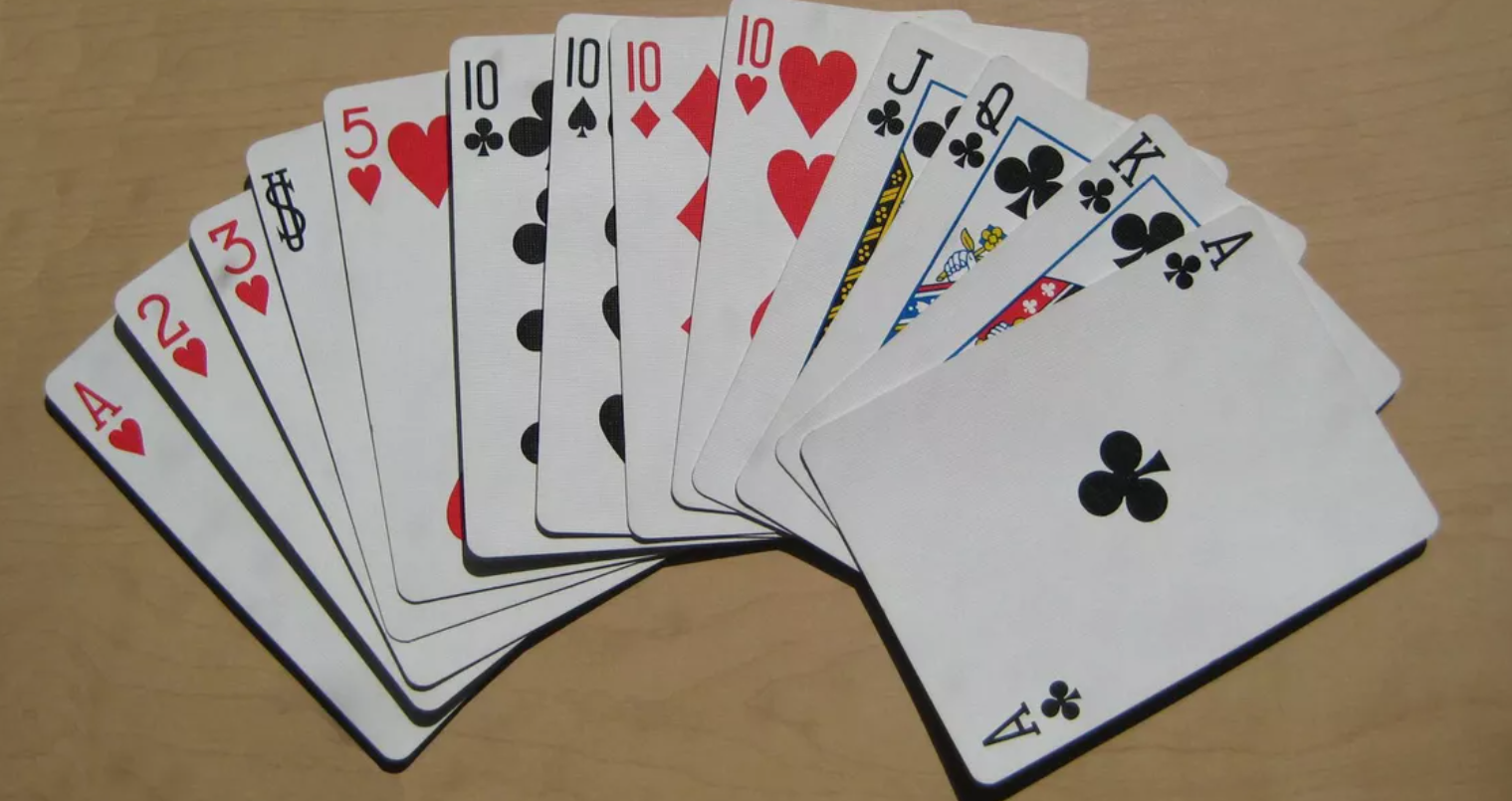
13 card game is a lot like Gin Rummy and other trick-taking card games, so fans of those will like it. There’s a learning curve, as there always is with card games. But once you know the patterns, you can dive straight into the action!
However, your tactics and some chance will determine your success or failure. Let’s go further into the 13 card game. We’ll review the essentials, the guidelines, and the action itself.
The 13-Card Game: What Is It?
Like Spades and Fox in the Forest, 13, a trick-taking card game, is a lot of fun. Like the histories of many earlier card games, nothing is known about this one. However, that’s OK with us since we know how to play.
There are various variants of 13, as with many traditional card games. While some rulesets may only accommodate two players, the classic variants we’ll discuss here can accommodate four. But before we go into the regulations, let’s look at the equipment you’ll need.
Needs and Wants?
You’ll need a deck of cards, as you may have figured, to play the card game known as “13.” In addition, the Joker cards are not utilized in 13 card game, therefore, the deck consists of the standard 52 cards. While any standard deck will fine, we advise against using a themed deck that mixes up the suits.
Various suits represent various values in 13; thus, it’s vital that everyone can recognize them. These basic decks from Integear are an excellent option. Now, before we get into the specifics of the game, let’s look at how the cards function in 13 card games.
Deck of Cards
At this point, things might become murky for newcomers. Each of the 13 cards has a numerical value and a suit ranking. From most valuable to least, the suits are Hearts, Diamonds, Clubs, and Spades, respectively.
There is also an ordered list of card values. This order, however, is different from what you would anticipate. In the value hierarchy of 13 card game, the twos are the highest, and the threes are the lowest. From highest to lowest, the values of the playing cards are as follows: 2, ace, king, queen, jack, 10, 9, 8, 7, 6, 5, 4, and 3. So, that’s the gist of 13’s card rankings and values. However, there is still much to discover about their proper use. Let’s go into an in-depth discussion of the 13 card game and how it’s played.
Instructions for Playing the 13 Card Game
13, the goal is deceptively straightforward: be the first player to play all their cards. But things can be challenging, can they? The card game 13 is very strategic, with many possible card combinations.
Positioning 1
The rules for the 13 card game are easy to set up. Each player receives one card at a time after the dealer shuffles the deck. There should be a total of 13 cards for each participant. As a result, all 52 cards will be distributed at the start of play.
After the cards have been distributed, everyone should examine their hand. The player holding the 3 of Spades (the game’s lowest card) must act and play their card first. After a card is played, the next person to the left takes their turn.
The next player must play a combination of the same kind as the previous player. Not only that, but their play has to outshine the prior one in terms of value. This should be pretty easy in the first round since the 3 of Spades is the lowest-value card. The game starts easily, but it ramps up quickly. Players may pass on their turn anytime if they cannot participate. Players may also pass if they don’t want to play a particular card or cards.
Keeping a powerful card in hand until the end of the game may pay huge dividends. Let’s go on to discuss combinations. The game with 13 card games has several possible outcomes. See the next section for some clarification.
Gambling on Sequences
The card game of “13” has a wide variety of variations. There are more straightforward and more complex permutations here. However, playing more cards at once with more complex combinations makes it harder for other players to keep up.
- To play a single card, reveal just that card from your hand.
- Play two cards from your hand that go together.
- Straight flush put into play a set of three identical cards.
- Play four identical cards from your hand to form a four-of-a-kind.
You may also play a series of three or more cards. The numbers 4, 5, and 6 may all be performed as a group.
A double sequence consists of two or more consecutive sets of six cards: 6, 7, 8, 9, 10, and Jack, for instance.
Sequences may be played with cards of any suit except 2. At last, the subject of bombs must be broached. Some card sequences may win against the number 2 cards, thanks to bombs. The highest-value card in the game is a 2, as you may recall.
Bomb hands include four of a kind and three in a row. All you need is a single 2 to play these explosives on top of. It is possible to play a double 4 sequence on top of a double 2 sequence. Lastly, three 2s may be placed atop a double sequence of five cards or more.
Although it’s rare, several permutations guarantee instant success. A player wins the game if they have four 2s. A player may win immediately with a straight flush (a sequence of cards from 3 to A).
Recap of Gameplay
Here’s a quick rundown of the game’s mechanics to help you get started. The first step is to give each participant a hand in 13 card game. Deal each card individually after making sure the deck has been thoroughly shuffled. Whoever has the 3 of Spades goes first. The 3 of Spades may be used alone or in a sequence.
For the next person to play, they must use a higher-value version of the same combination. A player with cards in hand but chooses to pass does so at their discretion. The cards are discarded, and a new round begins when all four players have either played or passed.
This round of play lasts until one player has exhausted their hand. The winner is the person who uses up their hand of cards first. Typically, a first-to-three-wins structure is used for the 13 card game. That means you’ll get to play numerous games in one sitting.
Conclusion!
This card game has a steep learning curve and a lot of information to retain. However, after you’ve mastered the fundamentals, you’ll discover a fascinating and strategic game that will be the talk of any game night. Playing 13 card game is fun if you like card games like Pinochle or Euchre.
FAQS
Can someone please explain how to play 13 card rummy?
Rummy with 13 cards is a game of strategy in which players compete by building sets and runs. Each player in 13-card rummy is given 13 cards and must use at least two to make pure and impure sequences. In a game of 13 card rummy, the only way to win is to build a pure sequence.
How does one play the card game 13?
To play 13 card game, you’ll need a standard 52-card deck and four players. For those playing Thirteen, 2s are high, and 3s are low. Hearts are the most valuable suites, followed by Diamonds, Clubs, and Spades. You must eliminate all your cards before your opponent to win a game of thirteen.
What is the rule of rummy?
The purpose of rummy is to form legal sets and sequences using the 13 cards given. Each player must make two sequences, one of which must be a pure sequence, per the requirements of rummy sequences. The second sequence has the potential to be both pure and impure.

